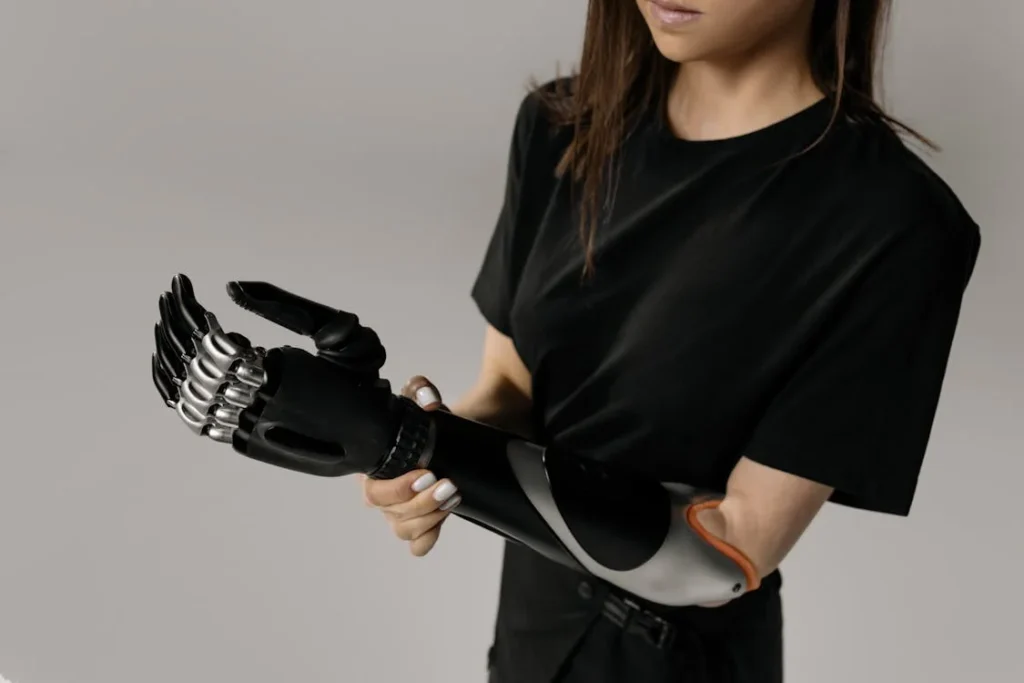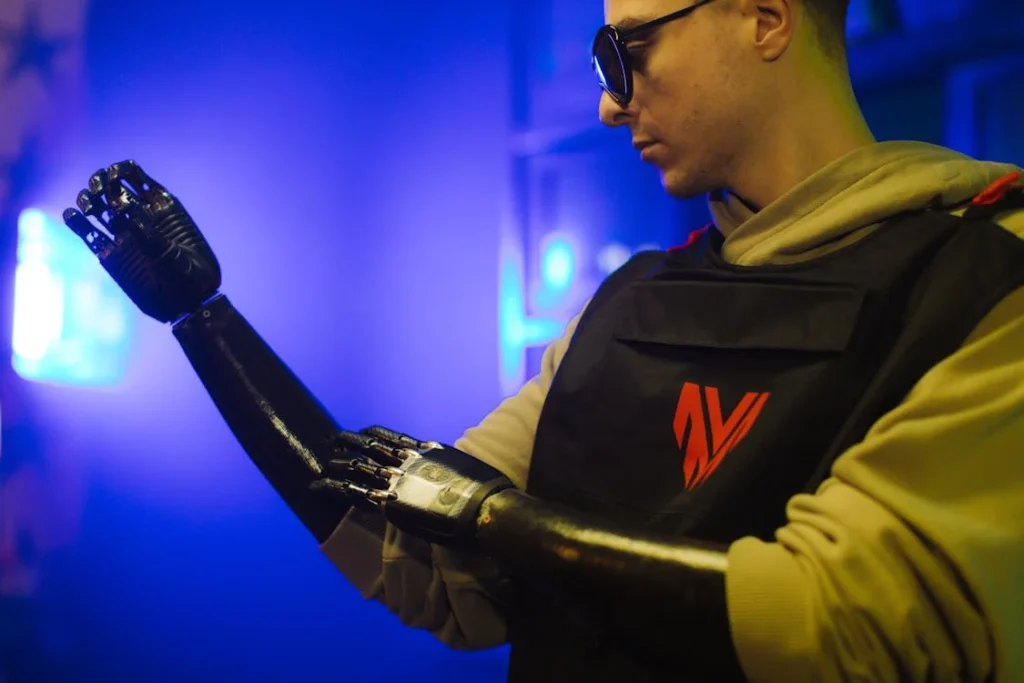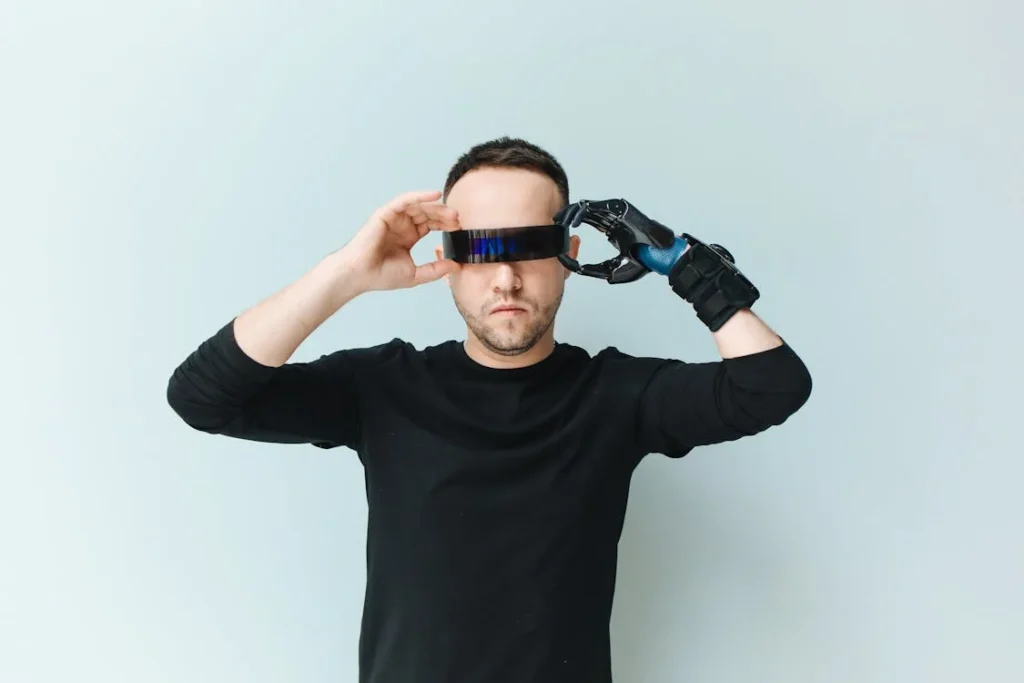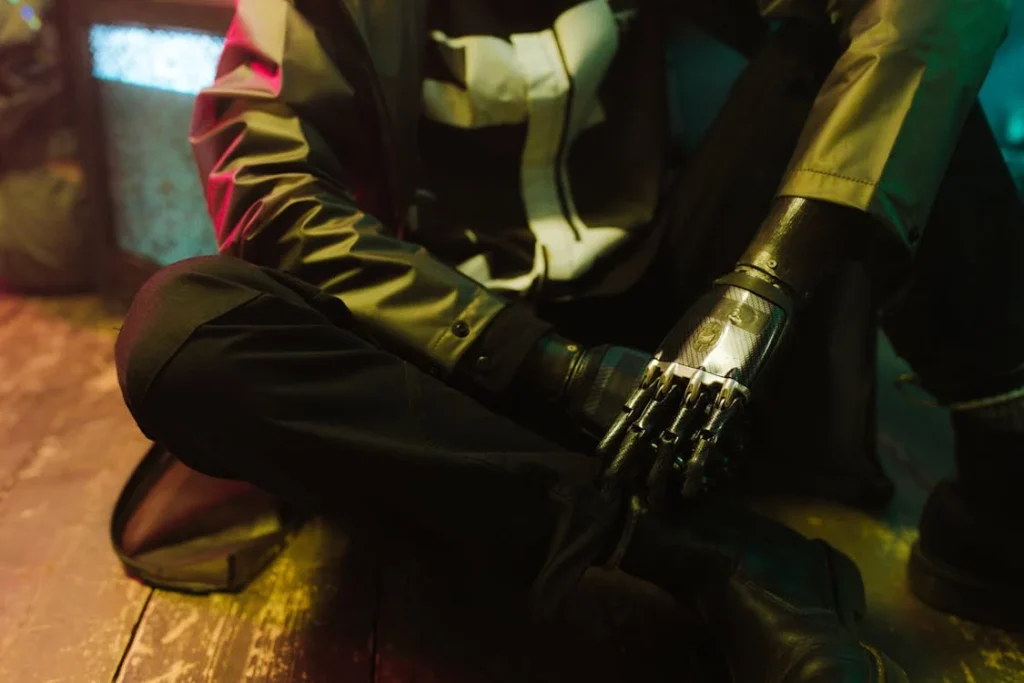Sticking to a rehab routine is tough. It’s physically demanding, emotionally draining, and sometimes, painfully repetitive. Even if you start with full energy and good intentions, it’s easy to lose steam when progress feels slow or invisible. At Robobionics, we work with patients every day who ask the same question: “How do I keep going when I don’t feel like it?”
The answer might surprise you. One of the most effective ways to stay disciplined during recovery isn’t about being tougher or working harder. It’s about making the process feel more rewarding. And one of the best ways to do that is by borrowing ideas from something most of us already enjoy—games.
Game mechanics are everywhere in our lives. From fitness apps to loyalty points at your favourite coffee shop, elements like progress bars, levels, and streaks are designed to keep us engaged. When used the right way, these tools don’t just make things fun. They make difficult things feel doable. They help us build habits, stick to routines, and stay motivated—especially when the going gets tough.

Why Rehab Needs a Bit of Play: The Psychology of Gamification
Our Brains Love Rewards (Even Tiny Ones)
Let’s start with how your brain reacts to progress. Every time you complete a task—no matter how small—your brain releases a little bit of dopamine. That’s a feel-good chemical. It tells your body: “Well done. Let’s do this again.” This is the same reward that keeps you checking your phone, finishing levels in a mobile game, or sticking to a New Year’s resolution—at least for a little while.
But rehab, especially after surgery or limb loss, often lacks these small wins. Progress is slow. Some days feel like a step back. And it’s not always obvious how much you’ve improved. Without visible results, your brain doesn’t get that dopamine hit. Motivation fades. And what started as a focused journey becomes a daily struggle.
That’s where game mechanics come in. They help you “see” progress. They break big goals into small steps. They add meaning to repetition. And most importantly, they reward effort, not just outcomes. When you feel rewarded, you’re more likely to keep going. That’s how you build discipline—not by forcing it, but by enjoying the process just enough to stay consistent.
How Games Keep Us Hooked (and How Rehab Can Too)
Think about the last time you played a mobile game or tracked your daily steps. Why did you keep going? Most likely, the app gave you something to aim for. Maybe it tracked your streak. Maybe it gave you points. Maybe it showed a glowing bar slowly filling up.
These are simple game mechanics. They give your brain visual proof of progress. And once you get a taste of that momentum, you don’t want to stop.
Now imagine applying the same strategy to your rehab exercises. Instead of just doing your balance drills because your therapist said so, what if you earned a “level up” every time you completed three days in a row? What if you unlocked a new “badge” after walking a certain number of steps with your prosthetic? What if your effort got noticed—not just by your body, but by a tracker that showed your progress in a way that felt real?
This isn’t just wishful thinking. It’s something we’ve tested at Robobionics. Patients who used gamified rehab tools reported higher motivation, better consistency, and more enjoyment—even during hard phases. They weren’t working less. They were just seeing their effort in a more rewarding way.
Discipline is Easier When It Feels Like a Game
One of the biggest myths about discipline is that it’s only about willpower. But willpower is like a battery. It drains quickly—especially when you’re tired, stressed, or discouraged. Discipline that lasts needs something more. It needs structure. Feedback. Momentum. And that’s exactly what game mechanics provide.
When your rehab routine has elements like streaks, challenges, and milestones, your brain shifts its focus. Instead of thinking, “This is hard,” it starts thinking, “I don’t want to break my streak.” Or, “Just one more task and I’ll level up.” These shifts might seem small, but they add up. They make you show up on days when you don’t feel like it. They make repetition feel purposeful. And most importantly, they help you build habits that stick.
That’s what real discipline is—showing up again and again, even when it’s hard. And the more rewarding you make that process, the easier it becomes to keep showing up.

Building a Rehab Routine Like a Game Designer
Start With a Clear Goal, But Make It Flexible
Every game has a goal. Whether it’s saving a princess, reaching the finish line, or solving a puzzle, games are built around clear outcomes. But here’s the thing—those outcomes are never tackled all at once. Games break big goals into stages, chapters, and levels. That’s what makes them addictive. They feel achievable.
Rehab can work the same way. Your big goal might be to walk independently, regain balance, or learn to use a bionic hand with precision. But that goal can feel overwhelming when you’re just starting. If it seems too far away, your brain checks out. Instead, game designers would break that goal down into manageable steps.
At Robobionics, we often help patients create these “levels.” For example, Level 1 could be sitting up on your own. Level 2 might be standing with support. Level 3 could involve taking your first three steps. Each level builds on the last, and progress feels constant—even when it’s slow.
But we also build flexibility into the system. Because in real life, recovery doesn’t follow a straight path. Some days you’ll fly through two steps. Other days, you’ll feel like you’re going backward. That’s okay. Games don’t punish you for getting stuck—they give you another chance. Rehab should do the same.
The key is to design a journey that’s forgiving but directional. You’re not stuck. You’re in a process.
Use Progress Bars to Make Invisible Effort Visible
One of the most powerful tools in gaming—and gamified design—is the progress bar. It shows how far you’ve come and how much further you have to go. It doesn’t have to be exact. Even a rough sense of progress is enough to keep most people motivated.
In rehab, we often overlook the value of these visual cues. But they can transform how you feel about your effort. We’ve helped patients build simple trackers—a wall calendar, a mobile app, even a paper chart—that shows sessions completed, goals unlocked, and effort over time.
There’s something deeply satisfying about seeing a chart fill up, a row of checkmarks build momentum, or a circle complete itself. It’s not childish—it’s biological. Your brain is wired to want to complete the picture. That urge is what keeps people hooked on games. And it can keep you hooked on rehab too.
When patients use progress tracking, their motivation stays steadier. Even when they feel tired or discouraged, the chart reminds them: “Look how far you’ve come.” That’s a powerful message. It builds internal discipline, not through pressure, but through pride.
Introduce Streaks to Strengthen Habits
Another brilliant idea from the gaming world is the “streak.” It’s a simple concept: do something consistently for several days in a row, and you build a chain. The longer the chain, the more motivated you are not to break it.
Apps like Duolingo use this to teach languages. But in rehab, it can help with consistency. At Robobionics, we’ve experimented with streak-based motivation, and the results have been inspiring. Patients who track their streaks—whether it’s attending therapy, doing home exercises, or logging their meals—tend to show up more regularly.
Why does this work? Because a streak feels like something you’ve earned. It gives you a personal record to protect. And when you reach five days, then ten, then fifteen, the habit becomes easier. You’re no longer deciding whether to show up. You’re just continuing what you’ve already started.
But we also teach patients not to panic when they miss a day. Life happens. What matters is bouncing back quickly. Even games give you a “retry” button. In rehab, the same mindset helps avoid guilt and instead encourages resilience. The goal isn’t perfection—it’s momentum.
Mini Rewards and Micro Wins Keep You Engaged
If you’ve ever played a game that gave you a reward for simply logging in—congrats, you’ve experienced the magic of micro rewards. These aren’t major prizes. They’re small nudges that say: “Good job for showing up.” And they work.
In rehab, micro wins matter. They help you stay mentally engaged during long, sometimes frustrating, phases of recovery. We encourage patients to create small rewards tied to effort, not results. Maybe it’s a favourite snack after a tough session. Maybe it’s watching a movie after a week of consistent practice. Maybe it’s sharing a win with friends or posting a selfie with a progress note.
None of this is about vanity. It’s about reinforcing discipline. When effort feels good—even in small ways—it becomes easier to repeat. You no longer need a big milestone to feel proud. You learn to celebrate the steps, not just the finish line.
Gamers know this instinctively. Rehab patients can benefit just as much from that mindset. You’re not cheating discipline—you’re building it smarter.

Turning Obstacles Into Challenges: Reframing Struggles Through Game Thinking
Why Frustration Can Be a Feature, Not a Flaw
In most games, there’s always a point where you get stuck. Maybe it’s a tough level, a hidden trick, or a boss that takes ten tries to beat. And yet, players keep trying. They don’t give up because the game has trained them to expect resistance. It’s part of the experience. And overcoming it feels incredibly satisfying.
Now, imagine approaching rehab with that same mindset. What if every plateau in your progress wasn’t a sign that you’re failing—but a signal that you’ve entered a new level? That your body is being pushed in new ways and adapting, even if it doesn’t look like progress yet?
At Robobionics, we often tell patients that struggle is not the enemy—it’s the gateway. When exercises start to feel repetitive or suddenly harder, that’s not a step back. It’s your body being challenged. And like in any good game, the challenge is what helps you grow.
Using this perspective, even setbacks can be reframed. A missed session? It’s a pause, not a failure. A harder day? It’s a tougher level, not the end of the game. By changing how you think about obstacles, you change how you respond to them. Instead of giving up, you adapt. Instead of avoiding discomfort, you see it as part of the path forward.
Adding Story to the Struggle: Becoming the Hero of Your Journey
Games aren’t just addictive because of points or levels. They’re powerful because they tell a story—and you’re the hero. That’s what makes the hard parts worth it. You’re not just solving problems. You’re becoming something more.
The same idea can be used in recovery. What if your journey was more than just a list of tasks or sessions? What if you saw yourself as the main character in your own story, overcoming hardship, building strength, and unlocking new parts of your identity?
This isn’t just a feel-good idea. It’s a mental strategy. When people view their lives through the lens of story, they make better decisions. They take setbacks less personally. They become more resilient.
We’ve seen patients build personal narratives around their rehab experience. One patient created a journal where he described each week of recovery like a mission in a game. Another gave herself “titles” every time she reached a new milestone—“Balance Queen,” “Stepper Master,” and so on. It may sound playful, but the effect was real: these small shifts made rehab less mechanical and more meaningful.
And when your effort has meaning, discipline follows.
Challenges That Adapt: Why Personalization Is Key
In the best video games, the difficulty adjusts as you improve. You don’t get stuck doing the same thing over and over. The game recognizes when you’ve mastered a skill—and then raises the bar. This keeps things interesting. It also keeps you growing.
Rehab should do the same.
That’s why at Robobionics, we avoid rigid, one-size-fits-all routines. Instead, we build rehab programs that evolve. If a patient improves faster in one area—say, strength—we increase the challenge. If they’re struggling with coordination, we slow things down and focus on basics. The goal is not to race to the finish, but to stay in the “sweet spot” where you’re being challenged just enough to stay engaged.
This adaptive approach also allows us to introduce mini-challenges—short bursts of focused activity that build confidence. These might include trying a new movement, using a prosthetic in a new way, or even mastering something small like opening a jar or typing a message. These challenges work like side quests in a game: not essential to the main storyline, but incredibly rewarding.
And when patients complete these challenges, they feel empowered. They see themselves as capable. That feeling is fuel for the next phase. It’s not just about moving the body—it’s about rewiring the mind to believe, “I can do this.”
Failure Without Shame: Learning from Game Design
Failure in rehab can feel heavy. It often comes with frustration, self-doubt, or even embarrassment—especially when others seem to be improving faster. But game mechanics give us a different model. In games, failure is common. Expected, even. You try, you fail, you try again. And every time, you learn a little more.
What if rehab embraced the same rhythm?
At Robobionics, we create environments where mistakes aren’t punished but explored. A patient falls during balance training? We ask: what did you notice? What changed? What can we try differently? This turns every failure into a feedback loop. Not “you didn’t succeed”—but “you just unlocked new information.”
This mindset shift reduces fear. It removes shame. And it makes people more willing to try hard things—because they’re not afraid of looking “bad.” They’re just playing through a tough level.
By using the same principles game designers use to keep players curious and confident, we help patients become more engaged, more consistent, and more disciplined in their approach. Not because they have to. But because they want to.

Making Rehab Social: Multiplayer Motivation and Friendly Competition
Why Shared Progress Feels More Rewarding
While solo games are great, some of the most engaging experiences happen when you play with others. Think of multiplayer games—why are they so addictive? Because there’s energy in doing something side by side. You’re not just moving through levels alone. You’re part of something bigger. You’re being seen. And when others are watching, you naturally bring more effort.
Rehab is no different.
When people train together—even in small ways—their motivation increases. At Robobionics, we’ve found that when patients see each other working toward their own goals, it lights a spark. They become more consistent. They laugh more. They share small wins. A silent group session becomes a space full of encouragement. Suddenly, exercises don’t feel like chores—they feel like shared missions.
Even when patients aren’t working on the exact same task, simply knowing others are also pushing through builds a strong sense of unity. It’s no longer “my rehab”—it becomes “our journey.” That’s when motivation stops needing constant effort. It becomes self-sustaining.
Friendly Rivalries That Encourage, Not Intimidate
Competition can be tricky in rehab. The last thing you want is someone feeling “less than” because they aren’t improving as fast as someone else. But when designed carefully, friendly rivalries can boost engagement without creating pressure.
We once ran a group session where each patient earned points—not for being the strongest or the fastest—but for showing up, trying a new activity, or completing three sessions in a week. The points were displayed on a shared board. At the end of the month, everyone got a certificate, but the titles were fun and light-hearted: “Most Consistent,” “Challenge Crusher,” “Steady Steps Champion.”
No one felt left out. Everyone felt involved. And many pushed themselves just a little harder—because they saw others doing the same. That’s the power of soft competition. It’s not about being the best. It’s about bringing your best, because others are bringing theirs.
And when patients feel like they’re part of a friendly, playful environment, discipline doesn’t feel like effort—it feels like momentum.
Using Teams to Build Accountability
Another game mechanic we’ve brought into rehab is teamwork. In many video games, players join guilds or squads. They take on missions together, share resources, and rely on each other. The same idea can work beautifully in rehab, especially for long-term recovery.
We’ve created team-based rehab challenges where small groups work toward a shared goal. Each member does their own exercises, but their progress adds to a common “team meter.” This approach completely changes the dynamic. You’re no longer doing it just for yourself—you’re contributing to something collective.
This shared responsibility increases commitment. It also builds deeper relationships among patients. They begin to check in on each other. Offer tips. Encourage one another on difficult days. And when someone misses a session, it’s not a therapist who calls them first—it’s their teammate.
This type of accountability isn’t rooted in shame. It’s rooted in care. It says, “We’re in this together.” And that emotional bond creates a strong pull. It makes people show up, even when they don’t feel like it. That’s discipline, built the human way.
Celebrating Together to Cement Habits
Games always celebrate progress. Whether it’s fireworks on the screen or an upbeat victory tune, they know how to make a moment feel special. In rehab, we often skip this. We move straight to the next goal without pausing to appreciate how far someone has come.
But we’ve found that when patients celebrate wins together—even small ones—the effects go deeper. They feel pride, not just as individuals, but as a group. The achievement feels real. And their belief in themselves grows stronger.
One of our practices includes “Victory Fridays,” where patients share their best moment of the week. It might be a step taken without support. Or using a prosthetic arm to hold a cup of tea. Or simply showing up to every session that week. We keep the tone light and joyful. And slowly, something beautiful happens—discipline turns into identity. People stop saying “I have to do rehab” and start saying “this is what I do now.”
They’ve become consistent not because someone forced them to be—but because they’ve grown into that version of themselves. That kind of transformation isn’t built through lectures or routines. It’s built through joy. Through community. Through the quiet power of shared momentum.

Designing Your Own Rehab Game: Personal Systems That Stick
Not Everyone Plays the Same Way—And That’s Okay
One of the biggest mistakes in rehab is assuming that every patient should follow the same motivational system. But just like in gaming, people are wired differently. Some like fast action, while others prefer strategy. Some chase points, others chase stories. That’s why the most effective rehab systems are personal—not generic.
At Robobionics, we’ve helped patients design their own “rehab game plans,” tailored to what excites them. Some thrive on streaks and numbers. They build color-coded calendars, track every session, and feel a rush from completing each one. Others want creativity and flexibility. For them, rehab becomes a story, a journal, or even a comic strip where each milestone is a new chapter.
We’ve seen patients draw visual maps of their recovery journey—adding stickers for every session completed. Others have created voice notes after exercises, capturing how they felt. These aren’t childish tools. They’re emotional anchors. They make the journey feel alive. And when your routine reflects your personality, discipline becomes a natural rhythm, not a forced effort.
The point isn’t to follow someone else’s formula. It’s to build a system you actually enjoy returning to. Something that feels yours.
Design for Your Day, Not Just Your Goals
One thing game designers understand deeply is user context. They don’t just create challenges—they create them based on when, where, and how players engage. If you only have five minutes, a mobile game gives you something quick. If you’ve got an hour, it rewards deeper play.
We can apply the same logic to rehab.
Your energy changes throughout the day. Your schedule changes during the week. Some days you have help, others you don’t. So instead of sticking to one rigid plan, we encourage patients to create two or three versions of their routine: a “light day,” a “regular day,” and a “power day.”
A light day could mean five minutes of simple stretching. A power day might involve a full workout or a long walk. The key is to match your routine to your bandwidth—not your ideal self, but your real self. And here’s the magic: when patients give themselves permission to scale down without guilt, they stop skipping days. They maintain the habit. They stay in the game.
In gaming, this is called “session design.” In rehab, it becomes life design.
Keep Surprises in the System
Games are addictive because they include surprises. Unexpected rewards. Sudden boosts. Twists in the story. These elements spark curiosity and keep engagement alive—even after many sessions. Rehab routines often lack this kind of novelty. But they don’t have to.
We’ve encouraged patients to introduce mini-surprises into their weekly plans. One woman used a jar full of “mystery moves”—small tasks written on folded paper. Once a week, she picked one at random. It might be something easy like “try a new balance trick” or something goofy like “dance to your favourite song for one minute.” Another patient built a “wheel of recovery” with different tasks and rewards. He’d spin it once a day.
These playful touches break the monotony. They remind you that growth doesn’t always have to be serious to be meaningful. When your rehab has room for fun, it becomes more than a routine—it becomes an adventure. And discipline built through fun is the kind that sticks.
Reflect, Refine, Repeat
Games aren’t static. They evolve based on player feedback. If a level is too hard, designers tweak it. If a feature gets boring, they add something new. Your personal rehab system should evolve the same way.
Once a week, take ten minutes to ask: What worked? What felt good? What felt like a drag? Use that feedback to adjust. Maybe you need more breaks. Maybe your rewards aren’t exciting enough. Maybe your “game” needs a new twist. That’s not failure—that’s smart design.
At Robobionics, we help patients set up short weekly reviews with their therapist or even just themselves. These check-ins help identify friction points early. They turn frustration into insight. And they give patients ownership over their journey.
Because in the end, rehab isn’t something that happens to you—it’s something you build. Like any good game, the more you make it your own, the more likely you are to keep playing.

The Long Game: How Gamification Supports Mental Health in Recovery
Discipline Isn’t Just Physical—It’s Emotional
When people think about rehab, they often focus on the physical part—movement, strength, coordination. But discipline during recovery is just as much about the mind as it is about the body. In fact, for many patients, the biggest challenge is not lifting the leg, learning to grip, or walking the distance. It’s waking up every day with the mental strength to try again.
After an amputation or major surgery, it’s easy to feel isolated. Progress can feel invisible. And when setbacks happen, they hit deep. That’s why gamification can be so powerful—it doesn’t just make tasks easier, it makes emotions easier to carry. It gives shape to what otherwise feels endless. It adds clarity, direction, and rhythm to a process that often feels overwhelming.
At Robobionics, we’ve seen patients light up—not because they’ve hit some medical milestone, but because their app told them they reached “Level 5: Consistency Champion.” That tiny piece of recognition wasn’t just a badge. It was emotional oxygen. A reminder that they’re not stuck. They’re on a path.
Hope Is a Discipline Too—and Gamification Can Nurture It
Hope isn’t something people wake up with every morning. Especially during recovery, hope must be cultivated. That means finding ways to believe—day after day—that things are improving, even if they don’t look like it yet. Game mechanics give you that belief system. Not with blind optimism, but with structured proof.
When you see a streak that’s five days long, it tells you, “You’ve done this before, and you can do it again.” When a progress ring fills halfway, it reminds you that you’re not at the beginning anymore. Even when your body is sore and your mind is foggy, these tiny signals say, “Keep going. You’re further along than you think.”
For people battling low mood, anxiety, or grief during rehab, this matters. It may not be a cure, but it’s a consistent thread of encouragement. A reason to get out of bed. A reason to show up. That’s what hope looks like in practice: a quiet, steady nudge to keep moving.
Self-Esteem Grows When You Feel in Control
Another mental health benefit of gamification is the return of personal control. Recovery can feel like your life has been handed over to therapists, doctors, routines, and machines. That loss of control—even when necessary—can deeply affect self-worth.
But when you build your own rehab game, track your own progress, or hit goals you set for yourself, something changes. You begin to reclaim your story. You’re no longer just a patient receiving care. You’re a player taking action. A person building something—one day at a time.
And when you feel in control, your confidence grows. Not because everything is easy, but because you’re proving, over and over, that you’re capable of doing hard things. That’s where real discipline takes root—in the quiet pride of showing up even when no one else is watching.
We’ve seen patients beam with joy as they mark off a 7-day streak. We’ve seen tears fall after hitting a “milestone moment” they didn’t believe they could reach. These aren’t just game features. They’re confidence tools. And for people in recovery, confidence is sometimes more healing than any medicine.
A System That Keeps Giving—Even When You’re Done
Perhaps the most beautiful thing about gamification is that it doesn’t stop working when formal rehab ends. In fact, many of the patients we’ve worked with take these systems into their everyday lives.
One man told us he continued using streaks to manage his morning routines—stretching, meditation, even cooking. Another started applying progress tracking to learning how to drive again with his prosthetic. One woman used her old rehab milestones to create a weekly rhythm of gratitude. “If I could get through that week,” she said, “I can handle this one.”
The long-term benefit is clear. Gamification helps create a mindset that sees structure not as a burden, but as support. It turns chaos into clarity. It makes discipline feel like a choice—not a chore. And once that mindset is in place, it becomes part of who you are.
That’s how discipline lasts beyond rehab. That’s how recovery becomes resilience.
Conclusion
Rehab is never easy—but it doesn’t have to feel like a grind. When you borrow ideas from game design, you turn routine into rhythm, effort into progress, and setbacks into learning moments. Discipline doesn’t just become manageable—it becomes meaningful.
At Robobionics, we’ve seen firsthand how game mechanics help people stay motivated, consistent, and emotionally strong. From simple progress trackers to streaks, badges, and playful challenges, these small tools create powerful change. They help patients stay engaged, celebrate effort, and build real habits that stick—even long after formal therapy ends.
Most importantly, gamification reminds you that you’re not just recovering—you’re growing. You’re not just following orders—you’re leading your own journey. And every time you show up, even on hard days, you’re proving something: that discipline can be designed, hope can be built, and healing can feel like winning.
You’re not just doing rehab. You’re playing—and winning—the long game.



